Breast Implant Illness (BII)
Disclaimer: I want to make it clear that I am not a medical professional who specializes in BII or similar health problems, and the information shared on this website is not intended as medical advice. I am sharing my personal journey and experiences with Breast Implant Illness (BII) to provide support and awareness. The content on this website should not be considered a substitute for professional medical advice, diagnosis, or treatment.
“Don't hog your journey. It's not just for you.”
Hoda Kotb, NBC Show Host
Hoda recalls the life-changing advice a stranger gave her.

Dec 2023 - Hi there! I'm Amie, and I'm on a journey to share my personal experience with Breast Implant Illness (BII). After facing the challenges of BII and making the decision to have my implants removed, I realized the importance of spreading awareness and providing support to others who may be going through a similar journey. I aim to offer a platform for education, empathy, and connection through my website and social media platforms. Join me as I share my story, insights, and resources to help you on your own path to wellness.
According to MOZ Analytics
6,560
Online searches, per MONTH, for "Breast Implants"
16,550
Online searches, per MONTH, for "Breast Implant Illness"
Why is there "no science behind it yet" when so many women are experiencing the same symptoms?
“Unlike BIA-ALCL, a scientifically-known condition linked to implants, Breast Implant Illness (BII) falls into a gray area, as there is no science behind it yet to either confirm or deny its existence.”
What is BII
BII: Breast Implant Illness
BII (Breast Implant Illness) is a term used to describe a range of symptoms and health issues that some individuals with breast implants have reported experiencing. These symptoms can include fatigue, joint pain, brain fog, anxiety, depression, and various other physical and emotional symptoms.
According to the FDA: “Symptoms such as fatigue, memory loss, rash, “brain fog,” and joint pain may be associated with breast implants. Some patients may use the term “breast implant illness” (BII) to describe these symptoms.” –FDA.gov

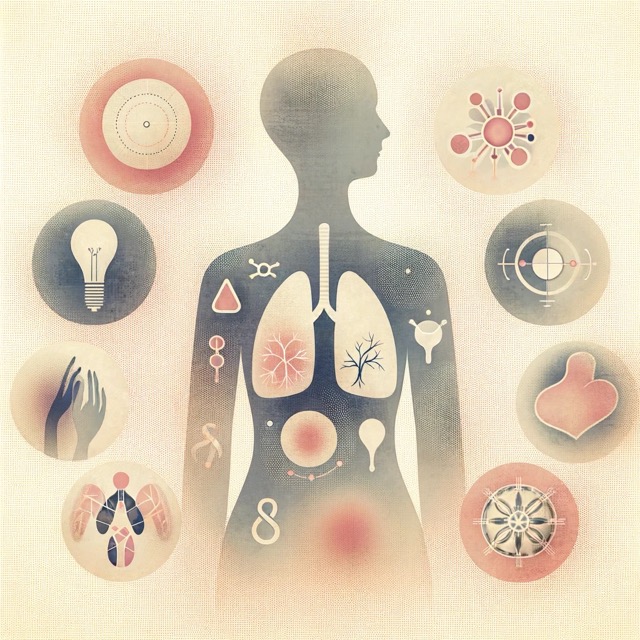
Symptoms of BII
Common symptoms associated with BII
It’s important to remember that not everyone with breast implants experiences these symptoms, and some people may have breast implants without any adverse effects.
- Fatigue: Persistent and unexplained fatigue or extreme tiredness is a frequent complaint among those with BII.
- Joint and Muscle Pain: Individuals with BII may experience joint pain, muscle aches, and stiffness.
- Brain Fog: Cognitive symptoms like difficulty concentrating, memory problems, and brain fog are often reported.
- Headaches: Frequent headaches or migraines can be a symptom of BII.
- Digestive Issues: Symptoms such as bloating, abdominal pain, irritable bowel syndrome (IBS)-like symptoms, and food sensitivities may occur.
- Skin Problems: Skin issues like rashes, dry skin, itching, and changes in skin texture may be experienced.
- Hair and Nail Changes: Some people with BII report hair loss, thinning hair, or changes in the condition of their nails.
- Breast Changes: Changes in breast appearance or discomfort in the breast area may occur, including breast pain or tenderness.
- Sleep Disturbances: Insomnia, disrupted sleep patterns, or difficulty falling asleep can be part of the symptom picture.
- Autoimmune-Like Symptoms: Some individuals may develop symptoms that resemble autoimmune diseases, such as joint inflammation or autoimmune disorders.
- Hormonal Irregularities: Hormonal imbalances and menstrual irregularities have been reported in some cases.
- Respiratory Symptoms: Shortness of breath, chest pain, or respiratory issues may occur.
- Heart Palpitations: Some individuals with BII report heart palpitations or irregular heartbeats.
- Other Symptoms: Other symptoms that can be associated with BII include swollen lymph nodes, dry eyes, dental problems, and a general feeling of unwellness.
- Anxiety and Depression: BII can have a significant impact on mental health, leading to symptoms of anxiety and depression.
The relationship between breast implants and these symptoms is still a subject of debate within the medical community, and more research is needed to understand the underlying mechanisms, if any.
Misconceptions About BII
The items listed below can be very frustrating for people who believe to be suffering from BII:
- All Breast Implants Cause BII: In reality, not everyone with breast implants experiences BII symptoms, and there are many factors at play, including implant type, individual health, and more.
- It’s a Medically Recognized Diagnosis: BII is not yet recognized as a specific medical diagnosis by major medical organizations like the American Medical Association. The symptoms associated with BII are often subjective and can overlap with other health conditions, making diagnosis challenging.
- Implant Removal Guarantees Symptom Relief: While some people report symptom improvement or resolution after removing their breast implants, it’s not a guaranteed outcome for everyone.
- There’s One Specific Test for BII: There is no definitive diagnostic test for BII. Diagnosis often involves ruling out other potential causes of symptoms through medical evaluation and tests.
- Legal Action Guarantees Compensation: While some individuals pursue legal action against implant manufacturers, it’s essential to understand that legal outcomes can vary widely. Compensation is not guaranteed, and the legal process can be lengthy and complex.
- It’s a Rare Condition: The prevalence of BII is not well-established, making it difficult to determine how common or rare it is. Some people believe it is rare, while others argue that it may be underdiagnosed or underreported.
- BII Symptoms Are Psychosomatic: Some skeptics suggest that BII symptoms are purely psychosomatic (caused by psychological factors), but many individuals with BII have reported physical symptoms that affect their daily lives.
- There’s a Universal Treatment for BII: Treatment for BII varies from person to person. While some individuals find relief through implant removal, others may require additional medical interventions or therapies to manage their symptoms.

Surgery: Implant Removal Options
Important: KNOW THE DIFFERENCE
My first implant removal surgeon, who I fired, led me to believe it wasn’t necessary to have the capsule removed. He said that if he “sees anything,” he would “make sure to” remove any bad-looking scar tissue. He was very convincing, and if I hadn’t done my research, I would have ended up with the capsule (scar tissue) still in my body after surgery.
Please remember, this is my story, and every person is entitled to their own opinions about their bodies and needs to make the best decisions for them. I chose to have the en bloc capsulectomy done, but that does not mean that option is the right method for others. Consult with a trusted healthcare professional to discuss your options. For more about my decision and my journey, click here.

KNOW THE DIFFERENCE IN PROCEDURES
Before scheduling surgery, I recommend you do your research to fully understand your surgery options. Know the lingo because not all doctors explain the difference.
First, what's a "capsule"

A capsule is a sheath or continuous enclosure around the implant. Your body makes the capsule, usually composed of dense connective tissue (or scar tissue).
Think of the capsule like a pill/medication capsule. A pill capsule is a special container made of gelatin, sized for a single drug dose. The pill enclosure (capsule) prevents the patient from tasting the drug. So, the breast implant capsule is a layer of connective/scar tissue that encloses the implant.
ALL breast implants have a capsule!
The vast majority of the time, this capsule will comfortably hold the implant in place and cause no issues. I was told my capsule was thin and did not appear to have any issues. However, I still wanted it out of my body. That capsule was not there before my breast implants, and I do not want the capsule left in my body after the implants are removed. I also wanted to remove anything that was directly exposed to and touching the breast implants for the last 12 years.
Types of Breast Implant Removal Methods
My interpretations of the removal methods.
Below are images that are my interpretation of the different procedures. These are not accurate medical illustrations. These are my personal drawings and illustrations and are not to be used in a medical setting or for medical advice. I’m sharing these images with others because I was having a hard time understanding the differences between the procedures, even though I belong to the medical community.
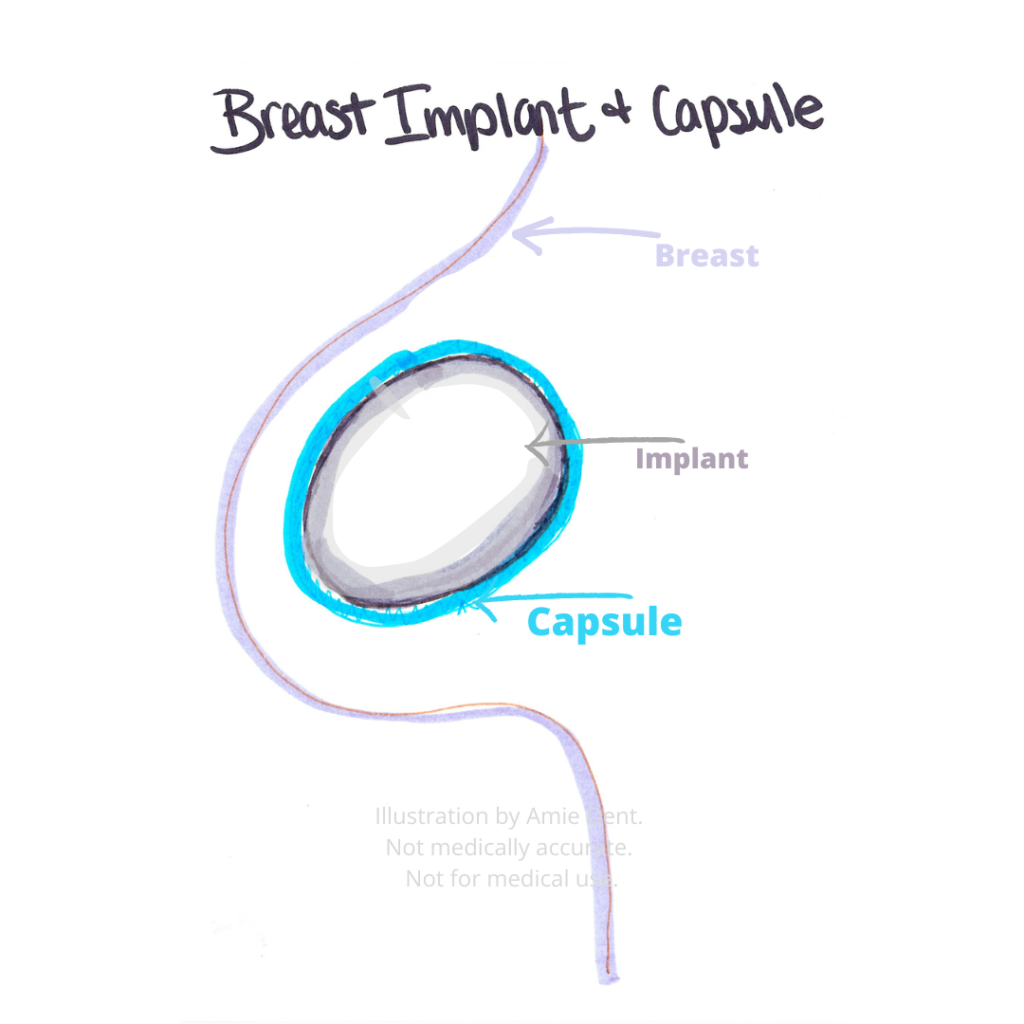
My understanding of the different types of Breast Implant Removal Options:
*These images do not represent accurate medical pictures or illustrations.
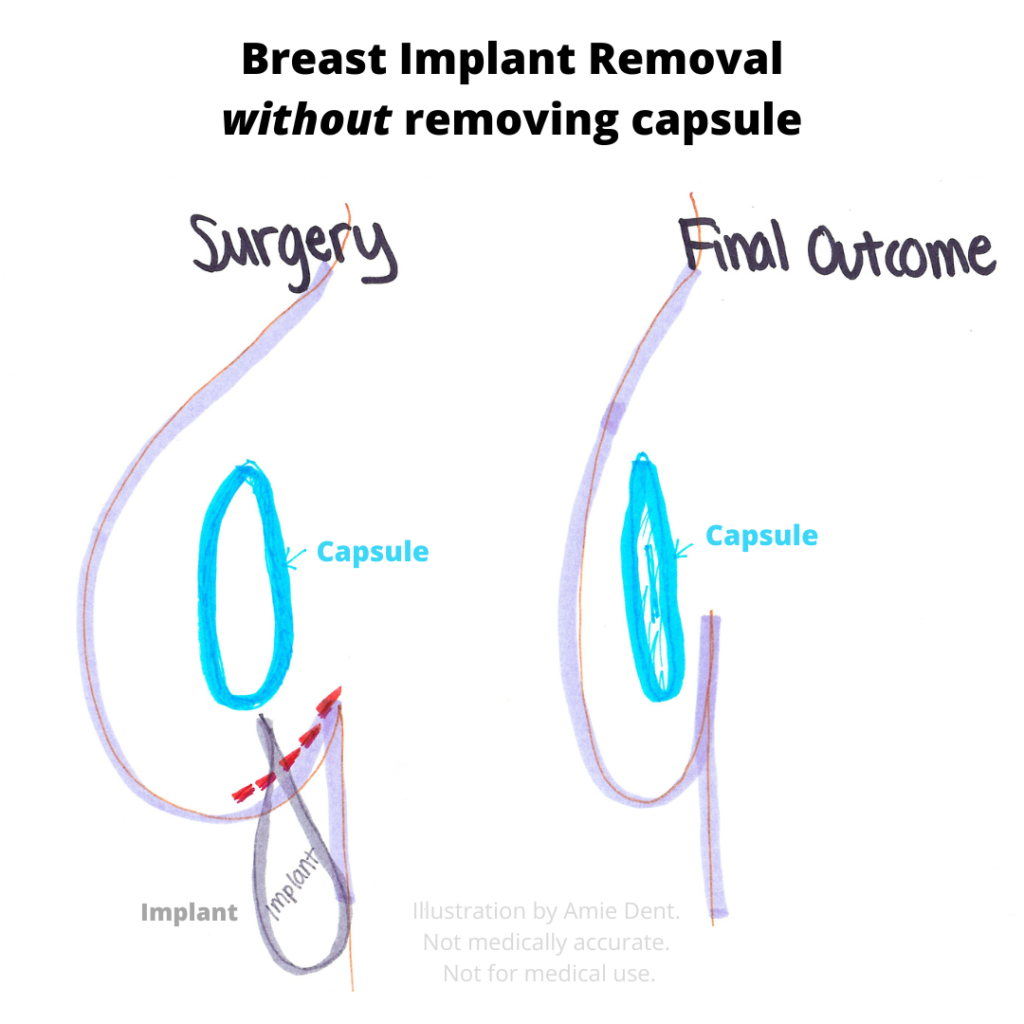
Breast Implant removal without capsule removal
In simple breast implant removal procedures, without a capsulectomy, the surgeon opens the capsule, removes the implant, and then leaves the capsule behind.
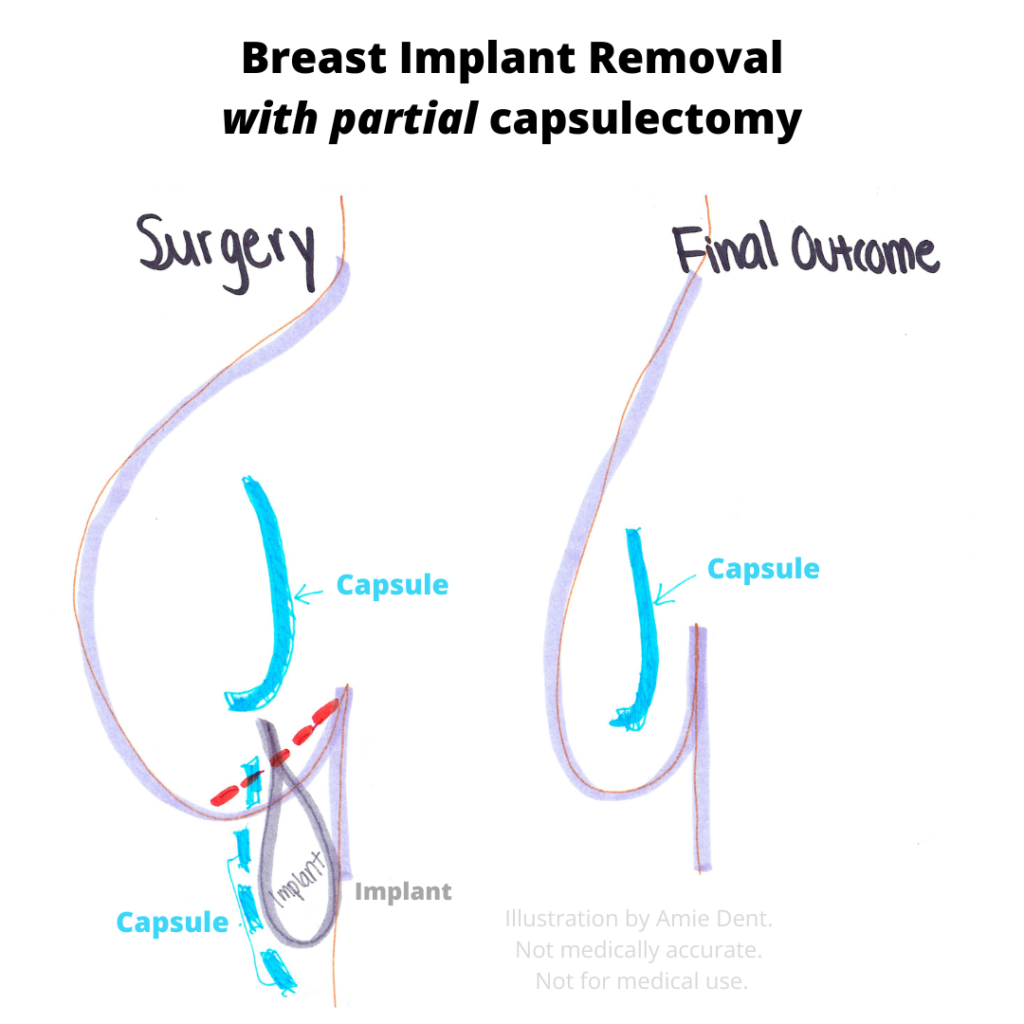
Subtotal or Partial Capsulectomy
A subtotal or partial capsulectomy only removes part of the capsule.
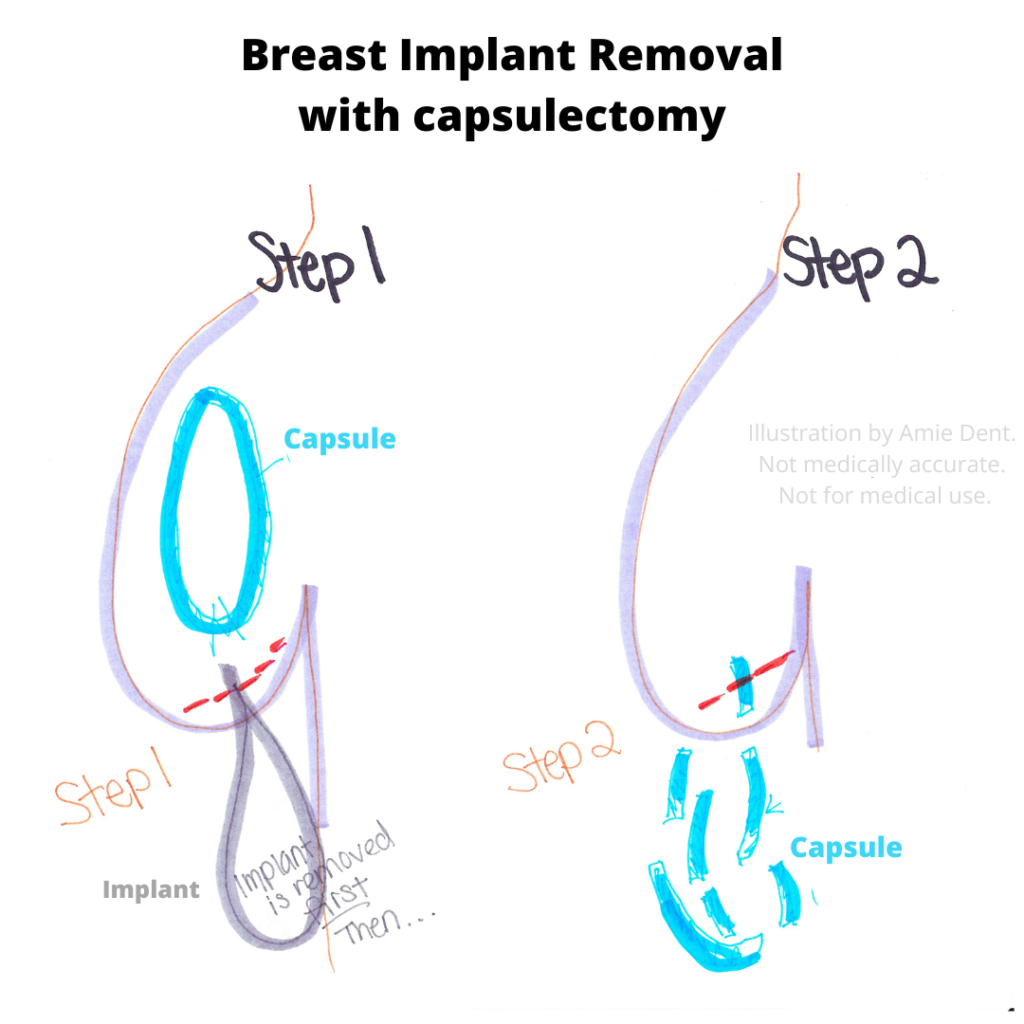
Total Capsulectomy
A capsulectomy in general involves creating an incision in the capsule and first removing the implant separately from the scar tissue. Once the implant is removed, then the capsule is removed.
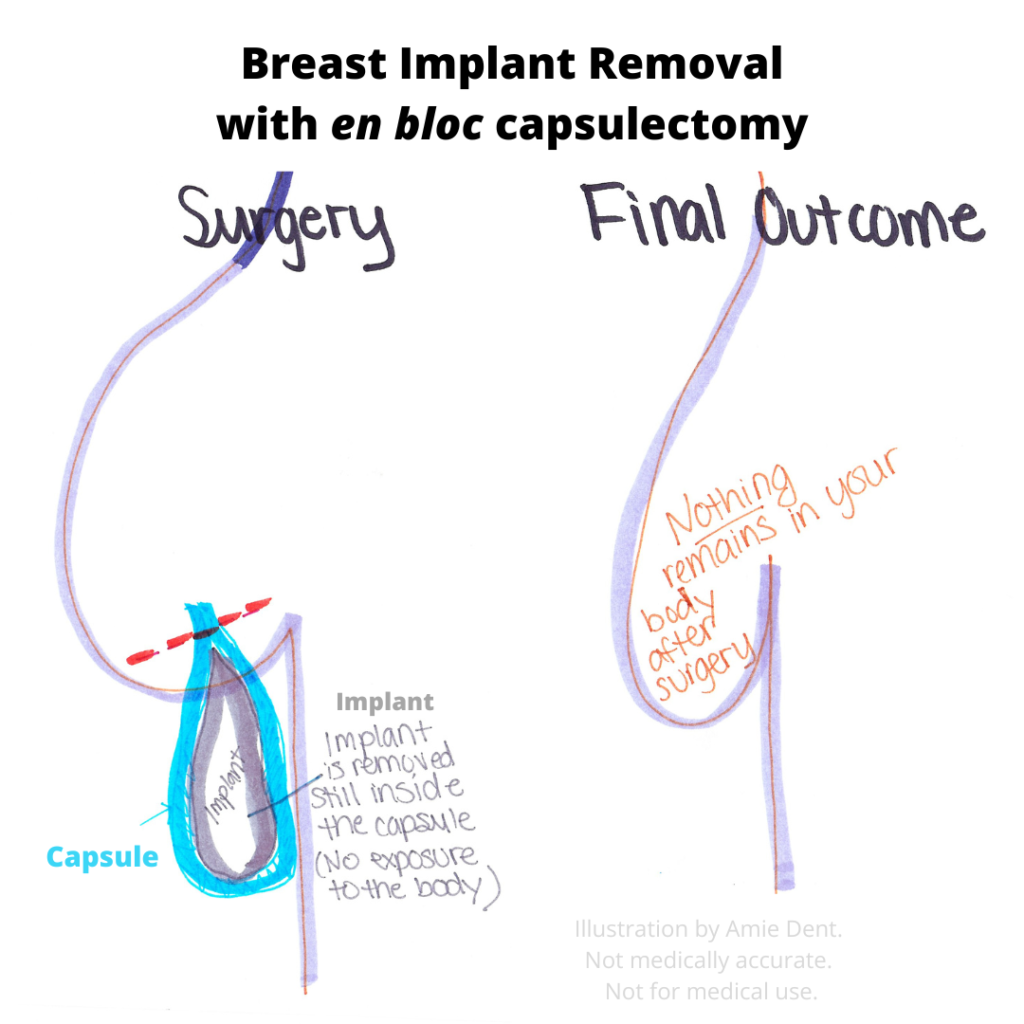
En bloc Capsulectomy
An en bloc capsulectomy removes the breast implant and the capsule (scar tissue), together as one unit, without cutting into or opening the capsule.
Work with Medical Professionals: Reach out to medical professionals who specialize in breast implant removal. They may have access to or knowledge of appropriate images for your needs.
ADVOCATE For Yourself
You Know Yourself Best

Trusting Your Instincts
Your journey through health and wellness is deeply personal, and no one understands your body better than you do. Trusting your instincts is a crucial aspect of advocating for yourself. If something doesn’t feel right, it’s important to acknowledge and act on these feelings. Remember, you are the most informed advocate for your own health.
Speaking Up
Advocating for yourself means speaking up when you need to. Whether it’s in a doctor’s office or in your personal life, your health and well-being should be a priority. Your voice matters. You can read my BII story here (click).
Embracing Community
Connecting with others who have gone through similar experiences can be incredibly supportive. Consider joining BII forums or support groups where you can share experiences, advice, and find comfort in a community that understands. Join our BII Community.
Seeking Knowledge
Information is power, especially when it comes to health. Educate yourself about Breast Implant Illness, understand the symptoms, and be aware of the treatment options. Knowledge equips you to have informed discussions with your healthcare providers and helps you make decisions that are best for your health.
Asking Questions
Never hesitate to ask questions, no matter how small or trivial they may seem. A good healthcare provider will welcome your queries and concerns. The more you understand about your condition, the better you can advocate for what you need. Check out my “Must-Have” Items that include printables to take to your doctor.
Finding the Right Support
It’s important to have healthcare providers who listen to you and take your concerns seriously. If you feel dismissed or minimized, seek a second opinion. Your comfort and confidence in your medical team are key to your care and recovery.
Documenting Your Journey
Keep a record of your symptoms, treatments, and how you’re feeling. This log can be invaluable in tracking your health and communicating effectively with your doctors. Check out my “Must-Have” Items that include printables to take to your doctor.
Final Thoughts
Advocating for yourself is a powerful tool in your journey with BII. Remember, you know yourself best. By trusting your intuition, seeking knowledge, and speaking up, you are taking vital steps towards your health and well-being. Your journey may inspire and empower others to do the same.
To Learn More About My Journey:
Disclaimer
The content on this website should not be considered a substitute for professional medical advice, diagnosis, or treatment.
I want to clarify that I am not a medical professional specializing in BII or similar health problems, and the information shared on this website is not intended as medical advice. I am sharing my personal journey and experiences with Breast Implant Illness (BII) to provide support and awareness. The content on this website should not be considered a substitute for professional medical advice, diagnosis, or treatment.
If you have concerns about your health or believe you may be experiencing symptoms related to BII or any other medical condition, I strongly encourage you to consult with qualified healthcare professionals. They can provide you with the appropriate guidance and medical advice tailored to your specific situation.
By sharing my story, I hope to provide insights, offer support, and foster a sense of community for those who are seeking information and connections related to BII. Please use the information on this website responsibly and in conjunction with the guidance of your healthcare providers.
Thank you for understanding, and I appreciate your support on this journey.
Warm regards, Amie







